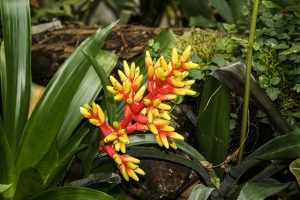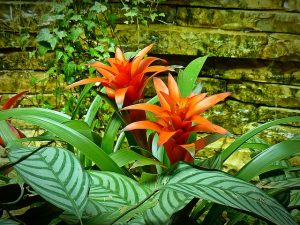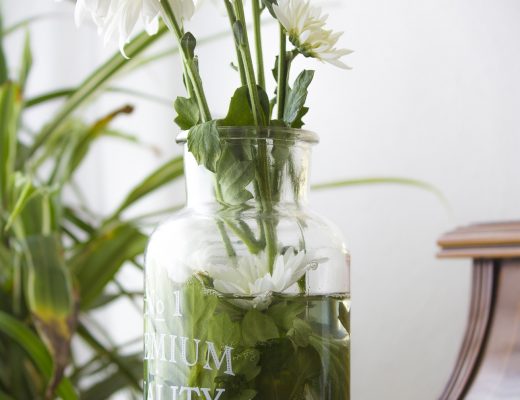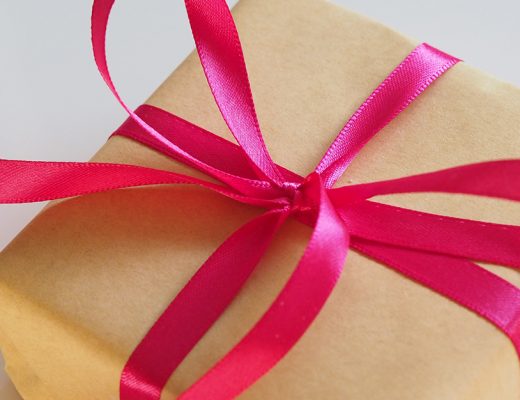Native to the tropical Americas, Bromeliads are great exotic plants to grow indoors and outdoors.
With proper care, anyone can grow them. Beginner and experienced gardeners alike can grow happy and healthy Bromeliads. But for a long time, these diverse flowering plants were considered advanced, more fit for professional growers.
Bromeliads come in many different colours, shapes, and sizes. They have exotic foliage, beautiful flowers, and wide-ranging textures.
So, if you want to learn more about Bromeliads and try your hand at growing them, you’ve come to the right place!
Our comprehensive guide covers the basics of growing Bromeliads, watering, and propagating them.
Bromeliads 101

The great majority of Bromeliads are native to tropical and sub-tropical regions of the American continent, but one of them can be found in Africa, namely the Pitcairnia Feliciana. Due to their diversity, Bromeliads grow at altitudes that range from sea level to 4200 meters high.
There are 3590 different species of Bromeliads; some of them are epiphytes, some are lithophytes, and some are terrestrial. Epiphytic and lithophytic Bromeliads can be grown in hanging baskets, while the terrestrial ones do best in regular containers with drainage holes.
As mentioned above, there are several thousand varieties of Bromeliads, so their sizes, shapes, and colours vary.
The foliage of Bromeliads is very diverse. You can find Bromeliads with symmetrical or asymmetrical leaves, spiky or soft, needle-thin or wide and flat, and so on. The colours of the leaves can range from different shades of green to red, yellow, cream, and brown.
A few things that most Bromeliads have in common are: their leaves grow in rosettes; they display interesting patterns, and they produce colourful flowers. With a few exceptions, Bromeliads only flower once, and their flower spikes last for three to six months. They produce “pups” that can be used for propagation.
Bromeliads are quite adaptable. Most species will do just fine in average home conditions as long as you provide them with well-draining soil and bright, indirect light.
Short History of Bromeliad Cultivation

We’ve been making use of Bromeliads for thousands of years. Aztecs, Incas, Mayas, and other native peoples utilized these versatile plants for nutrition, protection, and religious purposes. However, these plants entered recorded history some 500 years ago.
The Bromeliad reached the European continent in the eighteenth century, thanks to Columbus and other Belgian explorers and commercial travellers.
The Bromeliad that caught their attention was none other than the popular pineapple (Ananas Comosus). The delicious fruit compelled them to bring it to the Old continent and within 50 years it became highly cultivated in India and other European territories.
The pineapple is a bit of an exception because it is the only Bromeliad that produces fruit. Therefore, it took some time for the other Bromeliads to enter cultivation. Once found mainly in royal botanical gardens and private gardens of rich Europeans, Bromeliads are now widely used as ornamental houseplants.
With new species still being discovered and plant growers developing all sorts of interesting hybrids, these plants are a must-have for any plant lover.
Growing Bromeliads

And now for the fun part – growing Bromeliads!
The good news is most Bromeliads are low-maintenance and adaptable. These exotic foliage plants are quite easy to grow, but if you want them to produce beautiful flower spikes, you need to offer them a specific set of conditions.
And, since there are so many types of Bromeliads, these conditions can differ. So, it’s very important to know what type of Bromeliad you’re growing. To ensure that your Broms get the perfect growing conditions, make sure you check their label.
There are three main types of Bromeliads: epiphytic (growing on other plants), lithophytic (growing on rocks), and terrestrial (growing on the ground). Most of them can be grown in hanging containers and in pots that have drainage holes.
What Soil Suits Bromeliads Best?

Most Bromeliads, especially the epiphytic and the lithophytic ones can easily be grown in shallow pots filled with a fast-draining soil mix. Experts prefer to use a soil mix that’s one part perlite, four parts peat moss, one part sand, one part vermiculite, and one part composted cow manure.
If that sounds a bit too complicated you can go for a 50/50 mix of standard potting soil and orchid bark. Bromeliads aren’t particularly picky about their soil as long as it is well-draining.
Using soil from your garden is a big no-no as it will hold way too much water which might cause root rot.
How to Water Bromeliads
Bromeliads usually grow in tropical and sub-tropical regions, so they can withstand periods of drought. If you keep your plant in a warm environment, it’s best to keep its tank (the central part of the plant that resembles a cup) filled with water.
To avoid the build-up of salts and other impurities, make sure you clean the tank once in a while.
During the growth season, water your Bromeliads on a weekly basis, and cut back on watering over the cold winter months.
It’s better to underwater Bromeliads than to overwater them as they can be quite susceptible to root rot.
How Much Light do Bromeliads Need?
Different types of Bromeliads have different needs when it comes to lighting conditions. Some Bromeliads prefer bright direct light (full soon), while others prefer shade.
But, more often than not, these plants will flourish if you keep them near south, a west, or an east windowsill where they get dappled shade or filtered sunlight.
If your plant has a yellowish colour, it might be sunburnt. When that happens, make sure you move it to a more shaded area.
If, on the other hand, the foliage is dark green, and the leaves are growing unusually, your plant might need more light.

What Temperatures and Humidity Levels Are Best for Bromeliads?
If you live in one of the frost-free cities of Australia such as Darwin, Brisbane, Perth, Sydney, etc. you can easily grow Bromeliads outdoors.
However, if you live in a cooler region, it’s best to grow these tropical plants in pots and bring them indoors when temperatures drop.
In general, Broms do well in temperatures that between 12°C and 26°C and they cannot tolerate temperatures lower than 4°C.
The optimal humidity levels for Bromeliads, when grown indoors, are between 40% and 60%.
Do Bromeliads Need Fertiliser?
Bromeliads don’t need a lot of fertilizer. To encourage growth, you can use a diluted liquid fertilizer (1/2 – ¼ strength).
The easiest way to feed your Broms is by dropping a slow-release pellet fertilizer in the central cup and adding water. If you prefer to water the soil, mix the pellet with the soil compost. One pellet is more than enough for the whole season.
How to Propagate Bromeliads at Home?
Bromeliads grow in rosettes. This means that they grow new leaves from their centers. Once they reach maturity, their centers become crowded and they stop growing new leaves.
When that happens, they will most likely produce beautiful flower spikes.
Throughout their natural growth cycle, Bromeliads flower just once. Their brightly colored bracts (leaf-like structures from which an inflorescence grows) are easily confused with their flowers, which are often small and hard to notice.
The blossoms of Bromeliads are quite-long lasting, but they do wilt eventually. If they become unsightly, use a sharp, sterilized instrument, and cut them without injuring the parts that are still healthy.
Sadly, the mother plant will start to wither after blooming, but you’ll probably have plenty of offsets, also known as ‘pups’ by now.
The pups can be replanted to propagate the plant and continue its legacy.
Growing Bromeliads in Pots

Choose a pot the same size or slightly larger than the Bromeliad’s original pot. If you want to grow your potted Bromelia outdoors, choose a spot with dappled light. Make sure your plant doesn’t get sunburnt by the bright afternoon sun.
If you plan on growing a Bromeliad in a plastic container, place some stones at the base of the pot to make it more stable. This is not required if you are using terracotta or stone pots, as these are heavier.
Fill the chosen pots with orchid, bromeliad, or home-made soil mix, but don’t use soil from your garden. Bromeliads need well-draining soil, and regular soil holds too much moisture.
Before planting the Bromeliad, make a hole in the prepared pot that is the same size as the root ball.
Position the root system in the hole and hold the main body of the plant with one hand. Backfill the hole gently by pushing the soil under and around the roots.
If the plant is unstable, you can use stones or other materials to hold the plant upright until its roots settle in.
Water the newly potted plants generously.
Popular Varieties of Bromeliads

Guzmania
These Bromeliads are native to South America and have dark, glossy leaves. They are easy-to-grow, love the shade, and they produce exotic inflorescences.
Their actual flowers are small, but their bracts are large, bright red, yellow, orange, or purple and they last for many months. You can grow Guzmania plants in containers that are stable and well-draining.
In their natural habitat, Guzmania plants collect rainwater and use decomposing leaves and droppings from small animals and birds as nourishment.
Guzmanias make for great ornamental houseplants as they can be easily grown indoors. They prefer low light and high humidity. Over the warm summer months, they like a light daily mist in addition to regular watering.
Alcantarea
The most popular Alcantarea is the Alcantarea Imperialis. This large Bromeliad is native to Brazil and grows in the mountainous regions near Rio de Janeiro. It thrives at altitudes of around 1500m so, when planted in outdoor or indoor gardens they prefer loamy soil and occasional watering.
Alcantarea plants are collectively known as Giant Alcantareas, and their varieties are referred to as “Rubra”, “Purpurea” or “Silver Plum” due to their beautiful foliage. The leaves are often silver-green on the upper side, while the underside will be varying shades of plum or red.
When they reach maturity, Alcantarea plants produce 3m tall flower spikes with spectacular red bracts and tiny yellow flowers.
They can tolerate warm and cold temperatures, but not frost. They thrive in both shade and sun, and they require little maintenance. These friendly giants make great additions to any garden, be it indoor or outdoor.
Vriesea
The plants that belong to the Vriesea genus are very popular among Bromeliad growers all over the world. They are among the largest growing Bromeliads and they produce beautiful flower spikes.
Not all Vriesea plants produce flower spikes. Those that don’t will usually have interesting foliage. It is rather uncommon for a Vriesea to produce both interesting flowers and unique foliage, so you’ll have to choose one or the other.
Like most Bromeliads, Vriesea plants are quite susceptible to root rot, so they need a well-draining soil mix. The tank (the center of the plant) should be kept moist and the potting medium dry.
To prevent water stagnation and pest development, clean the tank with freshwater once a week.
They prefer a combination of bright light and shade and can tolerate most indoor lighting conditions. Outdoors, they should be protected from the bright midday sun.
Neoregelia
The great thing about Neoregelia is that its foliage looks amazing. This means that you’ll get to enjoy its exotic colors year-round. The violet-blue flowers produced by Neoregelia are located inside the tank and are not as spectacular as its leaves.
Neoregelias need plenty of bright light to show off their colors, so the ideal location for them is near an east or west-facing window. However, keep them out of the hot, direct sun as they are susceptible to sunburns.
These plants use their well-defined tanks to collect and absorb water and they use their roots for stability. Add water to their tanks regularly and try to keep it ¼ full. Cut back on watering over the cold winter months to avoid rot.
Ananas comosus ‘Champaca’
These ornamental plants have green, sword-like leaves and are quite curious and unique. They produce an inedible ornamental pineapple on a sturdy stalk that emerges from the centre of the plants.
They are relatively easy to grow as they are resilient, have tough leaves, and store water efficiently. Their root system is small, so they can be grown in shallow containers. They are not picky when it comes to soil, as they are perfectly content with a well-draining mix.
To grow your ornamental pineapple, all you need is a store-bought regular fruit. Separate the top from the rest of the pineapple, and plant it in a shallow hole in your garden or a container.
Ornamental pineapples love sunlight, but they can grow in dappled shade as well. Don’t water them too often when growing them outdoors as they are drought-tolerant and can live on rainwater. Indoors, water as you would any other type of Bromeliad.
Aechmea
Aechmeas are among the most popular Bromeliads as they produce spectacular pink and orange flower spikes.
They are a large group of plants that includes more than 3000 different species. Most of them have an exotic appearance, are easy to care for, and thrive when grown in containers.
Aechmeas are epiphytes. This means that, in their natural habitat, they grow on rocks, trees, and other plants.
To grow happy and healthy, Aechmea plants need dappled shade, a moderate amount of light, temperatures higher than 13℃, and a fast-draining soil mix.
Water them once or twice a month, or when you notice that the soil is too dry. Cut back on watering over the winter months and mist the leaves once in a while.
Billbergia
Billbergia plants come in a wide range of shapes, colours, and sizes. Their foliage grows in rosettes. Some have tube-like leaves, while others have leaves that spread outwards.
Their flowers are showy, but not as long-lasting as those of other Bromeliads. They grow on flower stalks and can be red, pink, purple, or blue.
Like many other Bromeliads, Billbergia plants are epiphytes and can be grown in small pots with fast-draining soil.
Depending on the species, Billbergia plants range in size from 20cm to 1m, so it’s best to choose a pot accordingly.
Billbergias make for great houseplants because they can tolerate a wider range of temperatures than other Bromeliads. They can be grown outdoors as long as the temperatures don’t drop below freezing.
They need a high level of humidity, but not a lot of water. Apply the ‘soak and dry’ technique by making sure that the soil feels dry to the touch before you add more water.
To avoid mineral buildup on the foliage, use rainwater or distilled water.
Cryptanthus
Crypthantus Bromeliads are also known as Earth Stars, due to their shape and are quite stunning and exotic. They grow natively in tropical areas and their colours range from lush green to vibrant pink or red. Their foliage can have pretty much any patter such as spotted, banded, solid, etc.
What makes these Bromeliads so popular among plant lovers are their beautiful blooms. They only bloom once, but they produce plenty of offsets, so you’ll never run out of stunning plants.
Different varieties of Crypthantus need different levels of light, but most will thrive in some sort of bright, indirect sunlight and dappled shade. In their native habitat, they grow under the cover of trees, so direct sunlight can severely damage their delicate foliage.
They thrive in humid conditions, so it’s best to keep their growing medium moist, but they won’t mind if you forget to water them once in a while.
Dyckia
Dyckias are native to the rocky regions of Brazil, Bolivia, Uruguay, and Paraguay. Some of them grow attached to rocks, while others are terrestrial.
Although they look a lot like succulents, Dyckia plants are also part of the Bromeliad family. Their needs are similar to those of succulents in that they love the sun, tolerate drought, and need a fast-draining soil. But unlike succulents, they don’t store water in their leaves.
Dyckia plants come in many different colours, shapes, and sizes and can be grown alongside succulent plants and will make a great addition to your garden. They have long, thin leaves with sharp spikes around the edges, so you might want to use gloves when handling them.
Unlike most Bromeliads, Dyckias have extensive root systems, so they need large containers that allow them to grow freely. Another thing that makes Dyckia unique is its ability to tolerate cold temperatures. While most Bromeliads will shrivel and wilt when frost hits, Dyckias will survive.
They attract bees, butterflies, and hummingbirds, which makes them great additions to any garden.
Tillandsia
Tillandsia is another popular genus of plant that belongs to the Bromeliad family. There are hundreds of different types of Tillandsia so they vary greatly in terms of shape, size, and growth requirements.
They grow natively in many parts of Central and South America and the most common and wide-spread type of Tillandsia is Spanish Moss.
Tillandsia plants are often referred to as air plants because they grow attached to trees and other plants. They are not parasitic, as they do not harm their hosts. Instead, they get all of their nutrients and moisture from the surrounding environment.
They can be grown in terrariums, in glass containers, or regular containers, both indoors and outdoors. Like most thin-leaved plants, Tillandsia needs a lot of moisture, and contrary to popular belief; they will not survive on misting alone.
They can tolerate drought but they will go dormant if you don’t water them often enough. The most efficient way to water a Tillandsia is by running it under the kitchen sink for a few minutes twice a week. When grown in particularly dry environments, Tillandsia might need even more frequent watering.
Tillandsia doesn’t need a lot of light and it won’t mind fluorescent lighting. So, if you’re looking for an office plant, Tillandsia is a great option.
Final Thoughts
That’s all we’ve got for you on the topic of growing bromeliads. Hopefully, that’s enough to get you growing them in your backyard.
Do you have a favourite type of bromeliad?
Is there something you’d like to know about them
If so, let us know in the comments.




No Comments